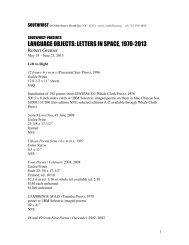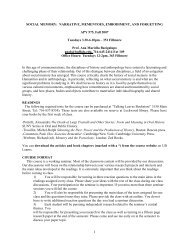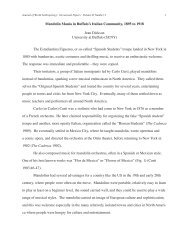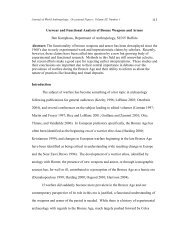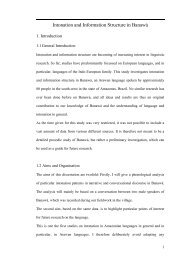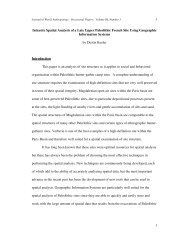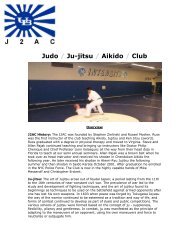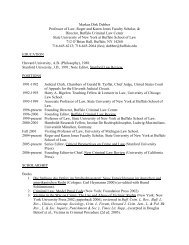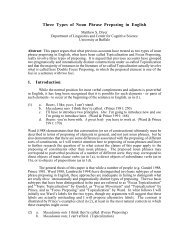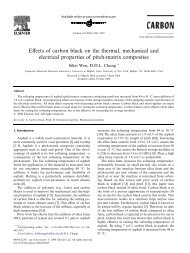Electrophysiological Evidence for Sentence Comprehension - Wings
Electrophysiological Evidence for Sentence Comprehension - Wings
Electrophysiological Evidence for Sentence Comprehension - Wings
Create successful ePaper yourself
Turn your PDF publications into a flip-book with our unique Google optimized e-Paper software.
earlier syntactic component, early left anterior negativity or ELAN (<strong>for</strong> the criticism of<br />
her design see Hagoort, 2003).<br />
In general, these results reveal the opposition between the two groups of responses: ones<br />
that are elicited by semantic and the ones that are elicited by syntactic violations. In a<br />
way, these results correspond to the analysis that views sentence comprehension as a two-<br />
foiled process in which, on one side, hierarchical structure is build and, on the other side,<br />
interpretation is given to the ‘slots’ that this structure prepares. However, at least some<br />
aspects of this view are wrong from the neurobiological point of view. From what is<br />
generally known about how neural circuits work, in<strong>for</strong>mation processing in human brain<br />
is parallel and distributed. It can also be assumed that the same neurobiological principles<br />
work across different cognitive domains. There<strong>for</strong>e, since we know that, <strong>for</strong> example,<br />
visual in<strong>for</strong>mation is processed in dorsal and ventral streams that process what and<br />
where, respectively, similar design could be assumed <strong>for</strong> language processing, as well<br />
(i.e. one can assume similar syntactic and semantic ‘streams’). By the same analogy,<br />
these ‘streams’ should be distinct, but highly interactive and a neurobiologically realistic<br />
model should take this into account. There<strong>for</strong>e, what is computationally elegant (such as<br />
the syntax-first view on language comprehension), is not necessarily realistic in<br />
neurobiological sense. Indeed, recent research into various aspects of sentence<br />
comprehension reveal interaction between syntactic- and semantics related processes<br />
(e.g. manipulations of N400 and P600 amplitudes related to Agent animacy in active and<br />
passive sentences and verb transitivity as in Kuperberg et al., 2006; interaction between<br />
grammaticality and frequency in tense violations in irregular verbs that elicit earlier P600<br />
20




